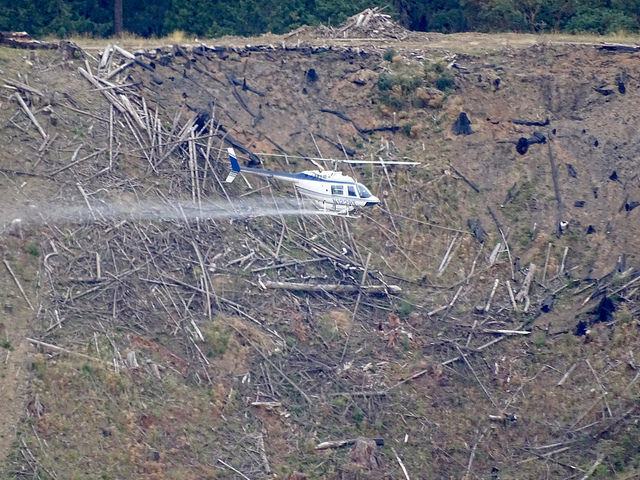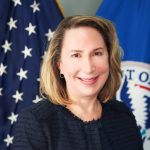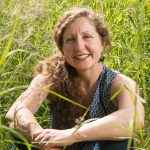Don’t Be Fooled by “Fake Forests”
 by Dominick A. DellaSala, Ph. D, Chief Scientist, Geos Institute
by Dominick A. DellaSala, Ph. D, Chief Scientist, Geos Institute
Originally posted on the Oregon Wild website
If a tree grows in a forest, does that make it a forest? Does planting trees compensate for cutting down a forest? How do we know we are in a forest or an unreasonable facsimile (“fake”) there of?
A new publication “The World’s Biomes” is set for release in libraries globally in 2020. It will feature my chapter on fake vs. real forests. Contact me at dominick@geosinstitute.org for an advanced copy of this chapter.
In the meantime, here’s a sneak preview of what’s inside a real vs. fake forest.
Forests are in the eyes of the beholder. To a forester, they are cash crops planted in dense rows like corn to be thinned, sprayed, and fertilized for the quickest return on investment (usually logged and replanted every 35 years on private lands).
To an ecologist, a real forest is a place where the sum-of-the ecosystem parts is greater than the whole.
Scientists refer to this summation as “ecological integrity.” And it’s simple – real forests have the most integrity, fake ones have none. Unfortunately, real forests are declining globally as fake forests replace them via an unmitigated, massive eco-engineering of the planet.
Real forests are superior to their fake counterparts in every aspect. They are complex structurally from the penthouse (forest canopy) to the basement (soils). Are connected by an Avatar-like sub-highway of root masses and fungal mats that soak up vital soil nutrients and moisture. Their food-webs have interlocking strands that join squirrel to pine cone and squirrel to owl, deer to grass and deer to lion, and slugs to rotten logs (not sure what eats a slug!), and so on.
Real forests also are nature’s climate solutions, serving as enormous air filters and giant cooling towers, increasingly vital in a rapidly warming and drying world and for flood protection in a wetter one (i.e., “green infrastructure”).
 And to put this in a real-world context, I was at a recent meeting of Oregon Governor Kate Brown’s stakeholder group on forest carbon where members of the timber industry were arguing that they plant two trees for every one that they log and therefore that is a net climate benefit! This fuzzy math argument didn’t work in the 1980s as activists won the hard fought battle to ban nearly all old growth logging on federal lands, and it doesn’t pencil out today as logging real forests and converting them to fake ones contributes more carbon dioxide pollution than any industrial sector. In fact, when the real forest is logged and made into wood products, some 62% of its stored carbon is emitted as carbon dioxide, with the rest stored temporarily in products that last only a year (paper) to decades (buildings) before decaying in landfills. Planting trees or entombing wood in buildings does not compensate for carbon held by real forests for centuries.
And to put this in a real-world context, I was at a recent meeting of Oregon Governor Kate Brown’s stakeholder group on forest carbon where members of the timber industry were arguing that they plant two trees for every one that they log and therefore that is a net climate benefit! This fuzzy math argument didn’t work in the 1980s as activists won the hard fought battle to ban nearly all old growth logging on federal lands, and it doesn’t pencil out today as logging real forests and converting them to fake ones contributes more carbon dioxide pollution than any industrial sector. In fact, when the real forest is logged and made into wood products, some 62% of its stored carbon is emitted as carbon dioxide, with the rest stored temporarily in products that last only a year (paper) to decades (buildings) before decaying in landfills. Planting trees or entombing wood in buildings does not compensate for carbon held by real forests for centuries.
Plantations, tree farms, industrial forests, whatever one calls them, these “fake forests” are a poor substitute for real forests–particularly old-growth stands. They are prone to intense forest fires, are climate polluters, and are biologically impoverished “ecosystems.”
To request an advanced copy of Dominick’s chapter in the new scientific publication “The World’s Biomes” email dominick@geosinstitute.org. You can find out more about the Geos Institute and their work here.
Join the Cornerstone Network
Sign up with a monthly donation and become part of our Cornerstone Network. Network members recieve the messages posted here first, delivered directly to your inbox. Your ongoing support is the foundation of our work.

 Samantha Medlock is President of Climate Risk Advisors, helping communities and organizations advance equity, sustainability, and resilience. Her career began chasing floods as a local official in Texas Flash Flood Alley—a hands-on experience that still shapes her approach to climate and disaster risk management.
Samantha Medlock is President of Climate Risk Advisors, helping communities and organizations advance equity, sustainability, and resilience. Her career began chasing floods as a local official in Texas Flash Flood Alley—a hands-on experience that still shapes her approach to climate and disaster risk management.
 Arsum is the Senior Adaptation and Coastal Resilience Specialist for the National Wildlife Federation’s Southcentral Region. In this role, she advances climate adaptation efforts, with a focus on nature-based approaches to address the impacts of climate change and extreme events across the Gulf region. She has authored and co-authored numerous publications on climate impact assessments and adaptation solutions. Additionally, she regularly participates in state-based coastal resilience and hazard mitigation planning across the Gulf, collaborating with regional and local stakeholders.
Arsum is the Senior Adaptation and Coastal Resilience Specialist for the National Wildlife Federation’s Southcentral Region. In this role, she advances climate adaptation efforts, with a focus on nature-based approaches to address the impacts of climate change and extreme events across the Gulf region. She has authored and co-authored numerous publications on climate impact assessments and adaptation solutions. Additionally, she regularly participates in state-based coastal resilience and hazard mitigation planning across the Gulf, collaborating with regional and local stakeholders. Frank is the former President of the Reinsurance Association of America. Frank currently serves on the Advisory Board of the OECD’s International Network for the Financial Management of Large-Scale Disasters, the RAND Center on Catastrophic Risk Management and Compensation, and the University of Cincinnati’s Carl H. Lindner III Center for Insurance and Risk Management Advisory Board.
Frank is the former President of the Reinsurance Association of America. Frank currently serves on the Advisory Board of the OECD’s International Network for the Financial Management of Large-Scale Disasters, the RAND Center on Catastrophic Risk Management and Compensation, and the University of Cincinnati’s Carl H. Lindner III Center for Insurance and Risk Management Advisory Board. Jim is a multilingual world traveler. Based in Bavaria during the 1970s, Jim spent most of this period in India, Afghanistan and Nepal, where he founded and operated a charitable medical clinic serving Tibetan Refugees. He settled in Oregon in 1983 on a forested ranch in the Umpqua National Forest.
Jim is a multilingual world traveler. Based in Bavaria during the 1970s, Jim spent most of this period in India, Afghanistan and Nepal, where he founded and operated a charitable medical clinic serving Tibetan Refugees. He settled in Oregon in 1983 on a forested ranch in the Umpqua National Forest. Dr. Micah Hahn is an Associate Professor of Environmental Health in the Institute for Circumpolar Health Studies at the University of Alaska-Anchorage. She received her joint PhD in Epidemiology / Environment and Resources from the University of Wisconsin-Madison and her MPH in Global Environmental Health from Emory University. Subsequently, she was a postdoctoral fellow for the CDC Climate and Health Program, and in this position worked collaboratively with the CDC Division of Vector-borne Diseases and the National Center for Atmospheric Research. Her research focuses on understanding the health impacts of climate change and working with communities to develop locally-relevant adaptation and resilience-building strategies. Dr. Hahn is also on the Management Team of the Alaska Climate Adaptation Science Center.
Dr. Micah Hahn is an Associate Professor of Environmental Health in the Institute for Circumpolar Health Studies at the University of Alaska-Anchorage. She received her joint PhD in Epidemiology / Environment and Resources from the University of Wisconsin-Madison and her MPH in Global Environmental Health from Emory University. Subsequently, she was a postdoctoral fellow for the CDC Climate and Health Program, and in this position worked collaboratively with the CDC Division of Vector-borne Diseases and the National Center for Atmospheric Research. Her research focuses on understanding the health impacts of climate change and working with communities to develop locally-relevant adaptation and resilience-building strategies. Dr. Hahn is also on the Management Team of the Alaska Climate Adaptation Science Center. Michael is a former Founding Principal of Resilient Cities Catalyst, a global non-profit helping cities and their partners tackle their toughest challenges. He is currently the Executive Director of Climate Resilience Academy at the University of Miami.
Michael is a former Founding Principal of Resilient Cities Catalyst, a global non-profit helping cities and their partners tackle their toughest challenges. He is currently the Executive Director of Climate Resilience Academy at the University of Miami. Dr. Quintus Jett is a consultant, educator, and strategist for public causes. He has a doctorate in Organizations & Management from Stanford University, and a two-decade faculty career which spans schools, departments, and programs of business, engineering, liberal studies, divinity, and public and nonprofit management. Following Hurricane Katrina in 2005, Dr. Jett launched a volunteer project in New Orleans, which enlisted residents, students from over a dozen colleges and universities, and hundreds of others to field map the city’s Gentilly district, Lower Ninth Ward, and New Orleans East. Dr. Jett is an innovator in higher education, bridging the divide between academic research and the other priorities of the modern university, including student access and diversity, community engagement, and providing foundations for life-long learning in today’s rapidly changing world.
Dr. Quintus Jett is a consultant, educator, and strategist for public causes. He has a doctorate in Organizations & Management from Stanford University, and a two-decade faculty career which spans schools, departments, and programs of business, engineering, liberal studies, divinity, and public and nonprofit management. Following Hurricane Katrina in 2005, Dr. Jett launched a volunteer project in New Orleans, which enlisted residents, students from over a dozen colleges and universities, and hundreds of others to field map the city’s Gentilly district, Lower Ninth Ward, and New Orleans East. Dr. Jett is an innovator in higher education, bridging the divide between academic research and the other priorities of the modern university, including student access and diversity, community engagement, and providing foundations for life-long learning in today’s rapidly changing world. Scott is Monfort Professor of Atmospheric Science at Colorado State University. He has written about 100 publications in the peer-reviewed climate literature, is a former editor of the Journal of Climate, and served for five years as founding Science Chair of the North American Carbon Program.
Scott is Monfort Professor of Atmospheric Science at Colorado State University. He has written about 100 publications in the peer-reviewed climate literature, is a former editor of the Journal of Climate, and served for five years as founding Science Chair of the North American Carbon Program. Linda has many years of experience in disaster preparedness and resilience. She has been an elected official on the Linn County Iowa Board of Supervisors, Chair of the Metropolitan Planning Organization, the East Central Iowa Council of Governments, the statewide Mental Health Developmental Disability and the Linn County Board of Health. Langston is a former president of the National Association of Counties (2013-2014).
Linda has many years of experience in disaster preparedness and resilience. She has been an elected official on the Linn County Iowa Board of Supervisors, Chair of the Metropolitan Planning Organization, the East Central Iowa Council of Governments, the statewide Mental Health Developmental Disability and the Linn County Board of Health. Langston is a former president of the National Association of Counties (2013-2014). Ken works with families and organizations as a mediator, organizational consultant, trainer and facilitator. Along with his passion for helping people prepare for and reduce climate change, Ken also volunteers as a mediator through Mediation Works and is passionate about supporting youth through mentoring with Boys to Men of Southern Oregon.
Ken works with families and organizations as a mediator, organizational consultant, trainer and facilitator. Along with his passion for helping people prepare for and reduce climate change, Ken also volunteers as a mediator through Mediation Works and is passionate about supporting youth through mentoring with Boys to Men of Southern Oregon. Matthew is a retired high school teacher who was once honored as Oregon High School Social Studies Teacher of the Year. Before his teaching career he was in the restaurant business in Portland. He is also a lawyer who has been a member of the Oregon State Bar Association since 1980.
Matthew is a retired high school teacher who was once honored as Oregon High School Social Studies Teacher of the Year. Before his teaching career he was in the restaurant business in Portland. He is also a lawyer who has been a member of the Oregon State Bar Association since 1980. Andrea is the Resilience Policy Advisor for the North Carolina Office of Recovery and Resiliency. She works across state agencies and with local governments to increase the state’s resilience to the impacts of climate change.
Andrea is the Resilience Policy Advisor for the North Carolina Office of Recovery and Resiliency. She works across state agencies and with local governments to increase the state’s resilience to the impacts of climate change.